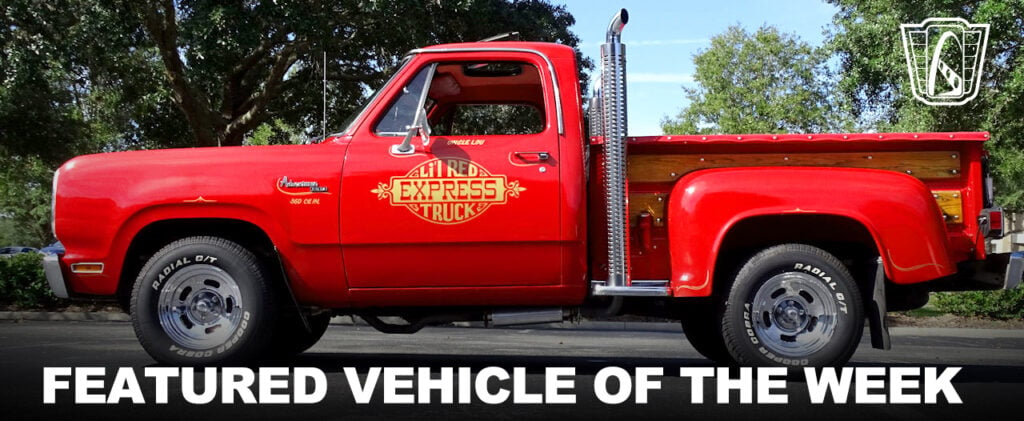
Kimberly V. Althage – April 29, 2022
The 1978-1979 Dodge Li’l Red Express was a specially built, limited edition stepside pickup and high-powered Mopar. It was a real looker with its flashy red design and iconic twin smokestack exhaust, making this little truck stand out. It was also anything but little because these trucks were real performers and often dubbed, the “Last American Hotrod” or the first muscle pickup.
Coined the Malaise Era, muscle cars were an extinct species by the late 1970s. American performance cars of the time were, by and large, dying out. All had their power output cut in half compared to similar models a decade before. In fact, most top-line muscle cars barely delivered 150 horsepower.
The oil crisis of 1973 was one big factor affecting automotive manufacturing performance later in the decade. March brought quotas for crude oil processing and deliveries to independent refiners were curtailed, effectively closing the independent service stations that accounted for over 40% of the retail gas market. Demand for fuel exceeded supply as Americans experienced with shock the nation’s first-ever peacetime gasoline shortage. Dozens of cars from all directions sat bumper to bumper at gas stations across the country. It was a common scene even before OPEC members placed their oil embargo in late October in retaliation for U.S. support of Israel.
The crisis allowed Exxon, Gulf, and Shell to create a “panic at the pump” by implementing ten-gallon limits, restricting business hours, and even running full-page alarmist newspaper ads. All of which only increased “gasoline fever” woes. Many argued it was indicative of an “overdue comeuppance” and that sweeping changes were inevitable, as Time detailed in their December issue, “A Time of Learning to Live with Less.”
Others pointed out the “ancillary disasters” of the American allure with the automobile. Those being air pollution, traffic congestion, environmental degradation, and roadway fatalities. The latter caused skyrocketing insurance premiums. The others created additional safety measures and environmental mandates. Measures like gasless Sundays and a new Federal 55-mile-per-hour speed limit were implemented. But nothing strangled the muscle cars of the era quite like the implementation of hugely restrictive catalytic converters into their production.
In 1970 President Nixon had signed for the establishment of EPA in July, and Congress passed the Clean Air Act of 1970 which he signed in December. The purpose was to establish air quality standards overseen by the EPA. To help burn off all the exhaust emitted by the engine, Federal regulations required all vehicles be equipped with catalytic converters. Because cats were new technology at the time, they were hugely restrictive and physically large. Plus, cats were a massive barrier to performance. Simply put, catalytic converters were not conducive for higher horsepower.
That combined with higher fuel prices, gas shortages, as well as a market shift to smaller, fuel-saving models of German and Japanese imports had most U.S. auto manufacturers scrambling to compete. As others clambered to reduce emissions and increase fuel economy figures, Dodge did the complete opposite when they created the Li’l Red Express. It became an icon of power as a result.
Tom Hoover and his engineering cohorts at Chrysler discovered the EPA did not require catalytic converters on vehicles with a gross vehicle weight (GVW) of more than 6,000 pounds. To be clear, GVW is the weight including passengers and a payload. And, since trucks can carry far more than cars, the Dodge D150 with a 6,100 GVW created a legal loophole big enough for it to charge right through.
The three men credited with the preparation of the Li’l Red Express as a follow up to the Warlock pickup, are Dave Koffel, Tom Hoover, and Dick Maxwell. Officially the brainchild of Tom Hoover, it was Mike Koran’s high-tech engineering team at Specialized Vehicles, Inc. (SVI) who designed a whole truck that was essentially a muscle car with a bed. The Li’l Red Express was one of the most insane factory-build vehicles of its era.
These mad scientists took a high-performance, free-breathing Police Interceptor engine (E58) and added performance components for greater power. This 360-cubic-inch V8 had cold-air induction, a four-barrel carburetor, special competition cylinder heads (for the 1978 year, for 1979 they used a basic police package), heavy-duty valve springs, and a gnarly camshaft. The modified engine pumped 225hp, making it the fastest production vehicle in 1978. It was capable of acceleration to 60 mph in only 6.7 seconds and could embarrass many of the more expensive sports cars built the same year. Its equivalent today would be a Dodge Ram SRT-10.
All Li’l Red Express vehicles ran on Chrysler’s legendary “LoadFlite” transmission, or a 727 modified 3-speed automatic. These LoadFlites allowed higher shift points than the standard-issue 727 TorqueFlite transmissions. Completing the performance enhancements was a dual-snorkel air intake. These intakes spent through iconic dual chromed Hemi-style mufflers, or 2.5” diameter exhaust stacks giving its resonating sound. All also came with the Convenience Package, and the Adventurer appearance package wearing an “Adventurer 150” badge.
The L’il Red Truck was initially called the “Red Warlock” during its conception phase, but the name was changed prior to its launch. Instead its name is a takeoff of the Little Red Wagon, which was so popular at drag races at the time. It lived up to its name with its bright red color, ’78 models were Bright Canyon Red (PY3442) and those of the ’79 model year were Medium Canyon Red (PY3450).
The bodacious red color of the Li’l Red Express pickup was accentuated by chrome everywhere – the massive side pipes, valve covers, bed steps, air-cleaner cover, and even the bolt heads that attach the oak body trim panels. Adding to its luster was an Old West-styled gold tape stripe package and decals on the doors and tailgate. There are slight variations in the location of these decals since they were applied by hand in different factories.
Their interiors were far more appealing than any standard pickup of the era. It was extremely sporty at a glance and looked like a cockpit of a ’70 Challenger. The gauge cluster and steering wheel were muscle car styled and was the model’s standard fare before truck interiors became luxurious.
The two model years were nearly identical, having only minor differences. The slightest change in color was already mentioned. 1978 models have round headlights on each side of the grille, while the 1979 models had stacked dual square headlamps. The 1979 model had a flat hood, and its grille was different. Also, the Dodge logo migrated to the forward edge of the hood in the truck’s second year of production.
Mechanically, the major difference was the addition of catalytic converters for the 1979 model year. Unfortunately, Federal mandates caught up with the pickup truck and required cats. Believing people would slow down and save fuel, the later model also got the mandated 85 mph speedometer. Except the concept failed, since the vehicle could top 120 mph.
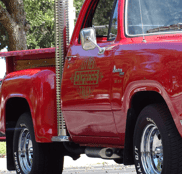
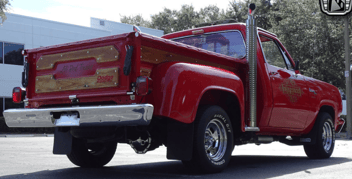
The party had officially come to an end. Dodge couldn’t build enough Li’l Red Express Trucks to satisfy demand its first year, but in 1979 sales languished and the model was discontinued. Yet, it had a good run, and is a rarity to behold. Only a total of 7,306 Li’l Red Express Trucks were built (2,188 units in 1978, 5118 in 1979) in all.
This 1979 Dodge D150 Li’l Red Express will stand out in any crowd with its tasteful upgrades such as a modern touchscreen head unit that includes a backup camera. If you would like to learn more about this muscle pickup, please contact our team in our Orlando Showroom.
Gateway Classic Cars sells and consigns hundreds of vehicles each month. Do you have a classic car for sale with a story to tell? We’d love to hear about it, please email us at news@gatewayclassiccars.com to share it.
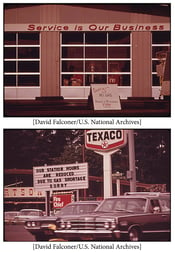
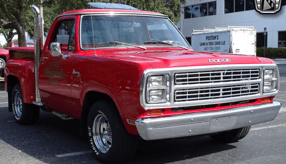
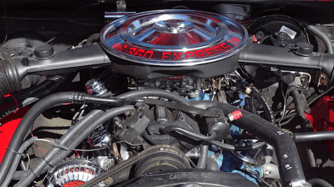
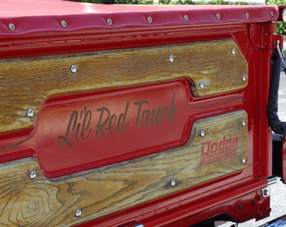
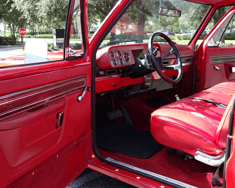

Comments